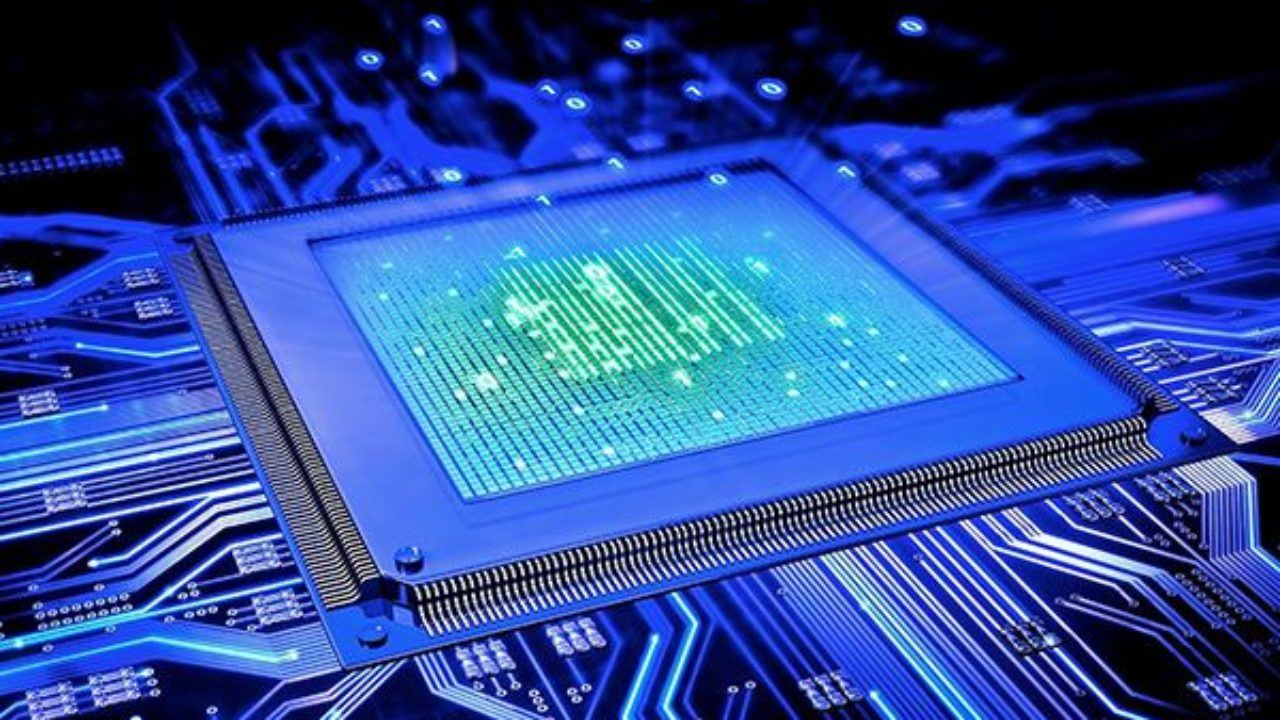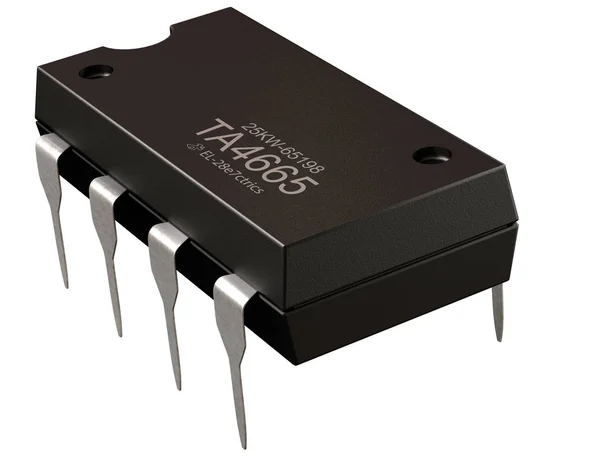Title: Application of Microprocessor in the Industry
Abstract
The learning process requires specific methods to achieve effective and efficient learning goals. Learning method is a way of carrying out activities between educators and students when interacting in the learning process. One of the learning methods is the demonstration method, which using objects or other teaching materials at the time of teaching. Students expected can understand the correlation between microprocessors and memory practically is one of the main goals in the microprocessor lectures. This research aims to help the learning process in the microprocessors lecture by designing and implementing the teaching aid of the " Industries where Microprocessor can be used" module.
INTRODUCTION
A microprocessor is an integrated circuit that contains all the function of a central processing unit of a computer. It is a semiconductor chip like silicon with combination of transistors.
It is an electronic component that perform the instructions and takes involved in computer processing which is central unit and manages the logical instructions passed to the logical instructions passed to it.
In short it processes an arithmetic and logical operation to provide desired output. There are many application of microprocessor some of them are household devices, industrial application, transportation, communication etc.
The Microprocessor based system (single board microcomputer) consists of microprocessor as CPU, semiconductor memories like EPROM and RAM, input device, output device and interfacing devices. The memories, input device, output device and interfacing devices are called peripherals. The popular input devices are keyboard and floppy disk and the output devices are printer, LED/LCD displays, CRT monitor, etc.
INDUSTRIAL APPLICATION
In this digital era the microprocessor is used in every IOT (internet of things) device. To make the life of daily user easier and solve problem. Here are some points where the microprocessor are used in industry they are
· They are used in industrial automation and to monitor and control industrial processes.
· They are used in CNC machines and other industrial equipment.
· Microprocessors are used in robotronics to control and monitor robotic systems, enabling them to perform complex tasks.
· Microprocessors are used in control systems for power plants and other industrial facilities to monitor and control various processes.
Some industry where the microprocessor are use
1. Consumer Electronics
· Smartphones and Tablets: Processing data, running applications, and managing communication functions.
· Personal Computers (PCs) and Laptops: Running operating systems, applications, and managing hardware resources.
· Gaming Consoles: Handling game graphics, physics, and overall game performance.
· Smart TVs and Set-Top Boxes: Running media content, internet applications, and user interfaces.
· Wearable Devices: Managing sensors, data processing, and user interfaces in smartwatches and fitness trackers.
2. Automotive Engine
· Control Units (ECUs): Managing engine performance, emissions, and fuel efficiency.
· Advanced Driver Assistance Systems (ADAS): Enabling features like lane departure warnings, adaptive cruise control, and automatic emergency braking.
· Infotainment Systems: Running multimedia content, navigation, and connectivity features.
· Electric Vehicles (EVs): Managing battery performance, energy consumption, and drive systems.
3. Healthcare
· Medical Imaging Devices: Processing images in MRI, CT scans, and ultrasound machines.
· Portable Medical Devices: Running diagnostics and monitoring functions in devices like blood glucose meters and portable ECGs.
· Patient Monitoring Systems: Processing and analyzing patient data in real-time.
4. Industrial Automation
· Robotics: Controlling robotic arms and machinery for precision manufacturing.
· Programmable Logic Controllers (PLCs): Automating industrial processes and machinery control.
· Human-Machine Interfaces (HMIs): Managing user interfaces for industrial control systems.
5. Telecommunications
· Network Equipment: Managing data traffic in routers, switches, and base stations. Mobile
· Network Infrastructure: Supporting 5G and other network technologies.
· Satellite Communication Systems: Processing data and communication signals.
6. Aerospace and Defense
· Avionics Systems: Managing flight controls, navigation, and communication in aircraft.
· Unmanned Aerial Vehicles (UAVs): Controlling drones and processing data from sensors.
· Weapon Systems: Running targeting, navigation, and control systems.
7. Finance
· Automated Teller Machines (ATMs): Managing transactions and security.
· Point of Sale (POS) Systems: Handling transactions and inventory management.
· High-Frequency Trading: Running complex algorithms for trading stocks at high speed.
8. Energy
· Smart Grids: Managing energy distribution and consumption.
· Renewable Energy Systems: Controlling solar panels, wind turbines, and energy storage systems.
· Oil and Gas Exploration: Processing data from sensors and control systems.
9. Retail
· Self-Checkout Systems: Managing transactions and inventory in retail environments
· . Digital Signage: Running advertisements and interactive content in stores.
· Inventory Management Systems: Tracking stock levels and managing supply chains.
10.Home Automation
· Smart Home Devices: Managing lighting, heating, and security systems.
· Voice Assistants: Processing voice commands and controlling connected devices.
· Home Appliances: Running smart features in refrigerators, washing machines, and other appliances.
These examples show how microprocessors are incredibly versatile and play a crucial role in modern technology across many different industries. Whether it's in consumer electronics like smartphones and laptops, automotive systems like engine control units and infotainment, or healthcare devices like medical imaging and patient monitors, microprocessors are essential. They also power industrial automation robots, telecommunications equipment, aerospace navigation systems, and financial transaction systems. Additionally, microprocessors help manage energy distribution in smart grids, control renewable energy sources, run retail self-checkout systems, and enable smart home devices. This wide range of applications highlights just how important and adaptable microprocessors are in our everyday lives and various professional fields.
Microprocessor
Architecture and its operations
The MPU performs primarily four operations.
·
Memory Read: Reads data from memory.
·
Memory Write: Writes data into memory.
·
I/O read: Accepts data from input devices.
·
I/O Write: Sends data to output devices.
Figure 1 INTEL 8085 ARCHITECTURE
CONCLUSION
The implementation of the "Industries where
Microprocessors can be used" module demonstrates the significant impact of
practical, hands-on learning in microprocessor education. By employing the
demonstration method, students can effectively grasp the practical applications
and correlations between microprocessors and memory, enhancing their
understanding and ability to apply this knowledge in various industrial
contexts. The module not only bridges the gap between theoretical knowledge and
practical skills but also underscores the critical role microprocessors play in
industrial automation, CNC machines, robotics, and control systems, reflecting
their pervasive influence in the modern digital era.




